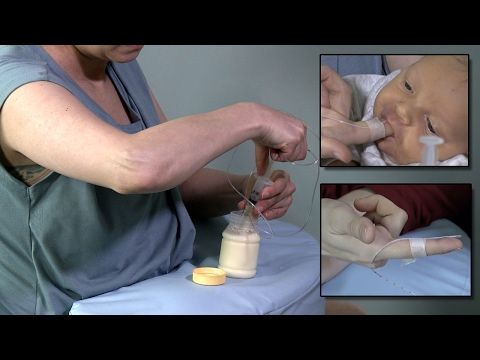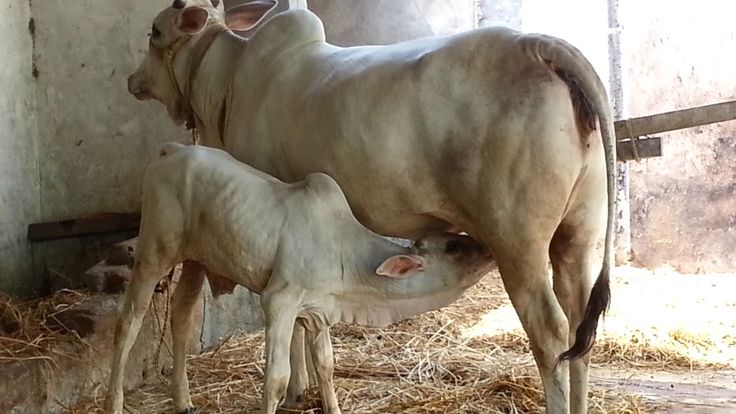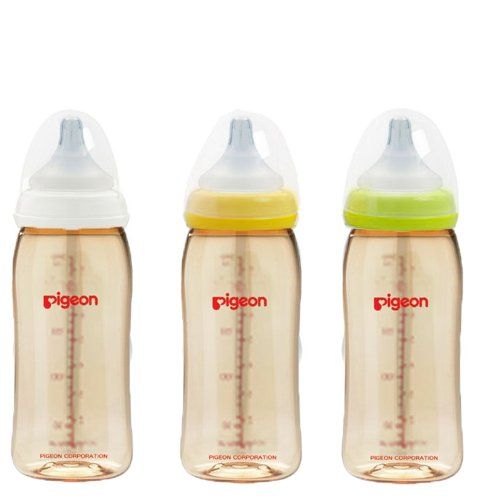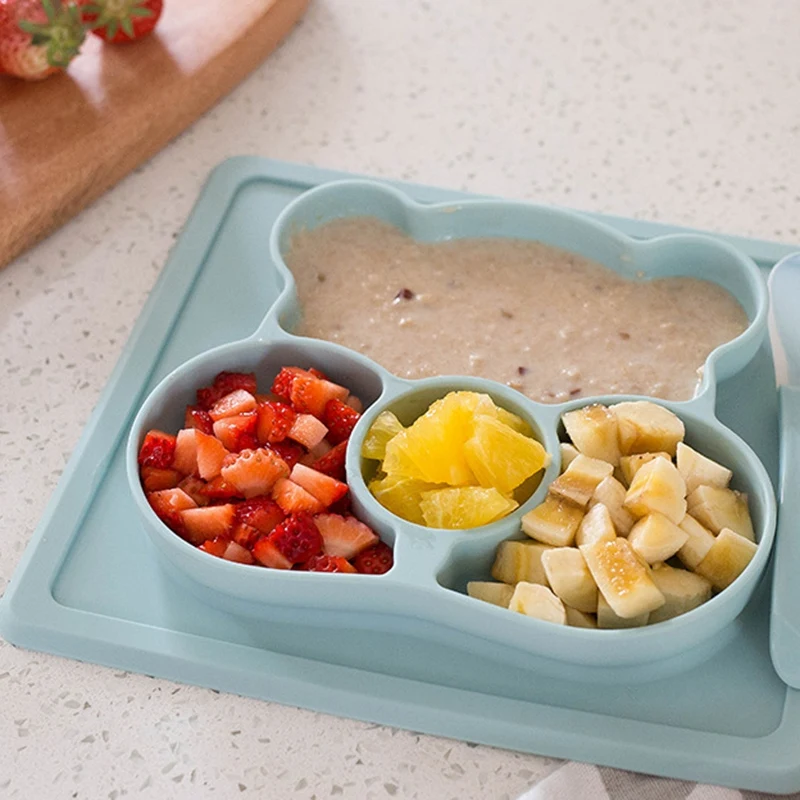How to tube feed a baby calf
How to tube feed a newborn calf
By Beef Cattle Research Council
Reading Time: 2 minutes
A screen shot from a video demonstrating proper head position for the calf when tube feeding. The video was created by the Beef Cattle Research Council. Photo: Beef Cattle Research Council
While the goal is to always have vigorous calves that nurse right away, and maternal cows that bring them up right, illness and suckling issues can be a reality. Esophageal feeding, or “tube feeding,” is essential when a calf requires colostrum, or if you are treating dehydration in a sick calf. Knowing how to properly tube-feed a calf is critical to support calves when they are at their most vulnerable. Here are a few tips for tube feeding calves:
Read Also
Partnering to produce high-end purebreds
An Alberta couple’s passion for investing in top breeders has helped produce high-quality Limousin and Hereford cattle in Canada and…
- Always have two esophageal feeders: one for sick calves and the other for feeding colostrum to healthy calves.
This will prevent disease and pathogen transmission from sick to healthy calves.
- Prevent aspiration with proper positioning. The calf can be standing, sitting, or lying down with the head in a neutral position above the stomach.
- Open the mouth and pass the empty tube over the tongue to the back of the mouth. Allow the calf to swallow the tube so that it easily passes into the esophagus.
- Never force the tube down. If there is resistance, pull the tube out and try again.
- Remember the “two-tube rule:” Once the tube is placed, you should be able to easily palpate both the enlarged esophagus and the trachea (windpipe). If both cannot be felt, you do not have proper positioning. Remove the tube and start again.
- The liquid being delivered to the calf should always be at body temp (38 C) to prevent shock in an already weak calf.
- Allow the feeder to empty slowly. This can take upwards of three minutes. Slow feeding will reduce the risk of regurgitation, preventing aspiration into the lungs.

- Clip or kink the tube after feeding to prevent excess fluids from draining as the tube is being pulled out. This cuts aspiration risk.
- Clean and sanitize the tube and feeding apparatus after every feeding.
It can be stressful when a calf needs to be tube fed. However, understanding proper technique and the physiology behind it can not only save lives, but will also improve the overall health of your herd. For more information, please visit the Calving and Calf Management page.
explore
Stories from our other publications
-
Alberta Farmer Express
beef cattle
Consider feed requirements for beef cattle during cold weather
-
The Western Producer
livestock
Avian flu continues to rage through B.C.
-
The Western Producer
livestock
U.S. maintains pressure on Canadian dairy policies
-
The Western Producer
livestock
Strings attached
How to Tube Feed a Calf
By Heather Smith Thomas – There are times you must get fluid into a newborn calf that needs colostrum or a sick calf that needs fluid and medications given orally. If a newborn calf is unable to nurse its mother or suck a bottle, the quickest and safest way to get colostrum into him is knowing how to tube feed a calf. A sick calf generally will not nurse a bottle, and the only way to give him adequate fluid is by tube.
If a newborn calf is unable to nurse its mother or suck a bottle, the quickest and safest way to get colostrum into him is knowing how to tube feed a calf. A sick calf generally will not nurse a bottle, and the only way to give him adequate fluid is by tube.
There are two ways to “tube” a calf. You can use an esophageal feeding probe (a metal or stiff plastic tube that goes down the calf’s throat and partway down the esophagusabout 16 inchesand is attached to a container or bag that holds the fluid you wish to give him), or you can use a smaller diameter long flexible nasogastric tube that goes into the nostril and then clear down into the stomach.
Years ago, before esophageal feeders were invented, the flexible nasogastric tube was the only way to get fluid into a calf. Our vet showed us how to use the “nose tube” 40 years ago when we were treating calves for scours. Since then, we’ve tube fed hundreds of calves. This handy tool made it easy to give fluids/electrolytes and oral medication to sick calves, revolutionizing our ability to head off dehydration and serious illness. We still use this kind of tube; in some instances, it’s more effective than using the shorter esophageal probe. We also use a larger diameter nasogastric tube for administering fluid (or mineral oil) to adult cattle.
We still use this kind of tube; in some instances, it’s more effective than using the shorter esophageal probe. We also use a larger diameter nasogastric tube for administering fluid (or mineral oil) to adult cattle.
For giving baby calves colostrum or electrolyte fluids, however, the esophageal feeder is extremely adequate and easy to use. Many ranchers today use this handy tool. When the calf is properly restrained and the probe carefully placed, it is a very effective and safe way to give fluid. Both the esophageal feeding probe and the nasogastric tube must be inserted carefully and properly, to decrease the risk of injuring or drowning the calf.
Using An Esophageal Feeder
One of the first things you’ll learn about how to tube feed a calf is there are several types of feeder probes. These consist of a nonflexible plastic or stainless steel tube (about ½ inch in diameter) with a larger-diameter bulb on the end that goes down the calf’s throat. A container for milk or fluid is attached to the other end. Some have a valve that keeps the fluid in the container from entering the tube until you release it. Others have a container bag that hangs down until you are ready to administer the fluid, and you raise it up when you want the fluid to go into the tube.
Some have a valve that keeps the fluid in the container from entering the tube until you release it. Others have a container bag that hangs down until you are ready to administer the fluid, and you raise it up when you want the fluid to go into the tube.
The rounded bulb on the end of the probe protects the mouth and throat from being scraped or punctured and helps prevent backflow of fluids up the esophagus; acting as a plug. It also helps the tube bypass the larynx and small opening into the windpipe when you are inserting the tube into the throat. The windpipe is slightly below and alongside the opening into the esophagus. You must not get any fluid into the windpipe; if it gets down into the lungs it will drown the calf.
Always make sure the feeding probe/container is clean; wash it thoroughly after each use so it will be clean for the next calf. When administering colostrum or fluid, make sure it’s body temperaturenot too warm or cold. If the calf is lying down, lift his head up to insert the tube. If he struggles, lift his front end up so he’s sitting on his haunches; you can restrain him more easily that way while you lift his head to insert the tube. If he is standing, back him into a corner (or have someone hold his back end), step over his back so you can hold his head and neck between your legs, and pull his head up with one hand under the lower jawso you can insert the tube with your other hand.
If he struggles, lift his front end up so he’s sitting on his haunches; you can restrain him more easily that way while you lift his head to insert the tube. If he is standing, back him into a corner (or have someone hold his back end), step over his back so you can hold his head and neck between your legs, and pull his head up with one hand under the lower jawso you can insert the tube with your other hand.
If it’s a cold day, warm the tube in hot water before you insert it. Gently put the tube into the side of his mouth. This is easier (and easier on the calf) than trying to force it into the front. Then aim it straight and slide it over the tongue to the back of the mouth and into the throat. The calf should swallow it as you move it back and forth and apply gentle pressure. Make sure the tube is not forced into the windpipe; the calf must be given a chance to swallow as it is pushed down. Stop pushing for an instant and place your fingers on the outside of the neck (front of the throat), to determine where the tube is going. You can feel or see the bulb end of the tube slip down the throat and into the esophagus.
You can feel or see the bulb end of the tube slip down the throat and into the esophagus.
If you can see or feel the bulb (above the windpipe), you know it’s in the proper place and it’s safe to continue pushing the tube farther down. If you can’t see or feel it, or the calf is coughing, or there are puffs of air coming out your end, it’s in his windpipe; you must take it out and start over. Be sure it’s in the esophagus and fully inserted (the bulb down close to the stomach) before you tip up the feeder container or release the fluid into the tube. Hold the calf so he can’t struggle or the tube may come partway out and allow fluid to get into the windpipe.
Bottle-feeding colostrum to a newborn calf.Using A Nasogastric Tube
For calves, a flexible plastic or nylon tube about 4 feet long is usually adequate. It should be about ¼ inch in diameter. For adult cattle, you need a larger diameter tube (about ½ inch) at least seven feet long.
This type of tube is handy to administer fluids or liquid medications, and better than an esophageal feeder if you are treating a bloated animal; it goes clear into the rumen and can let gas come back out the tube before you pour in the mineral oil or other medications. It is also useful if a calf has been eating dirt and is plugged up. You can put a small amount of water directly into the stomach and then let it come back out the tube, bringing dirt with it. By alternately putting water in and draining it out, you can clean a lot of dirt out of a calf.
It is also useful if a calf has been eating dirt and is plugged up. You can put a small amount of water directly into the stomach and then let it come back out the tube, bringing dirt with it. By alternately putting water in and draining it out, you can clean a lot of dirt out of a calf.
You can make a nasogastric tube from any flexible tubing of the proper diameter. Just smooth or bevel one end (with a knife, sander or grinder) so it won’t scrape the nasal passage and throat as it is put into the calf. You can administer fluid by attaching a large funnel to your end of the tube after the smooth end has been put into the stomach via the nostril. To administer mineral oil or castor oil (the latter, especially, is quite thick and won’t run down the tube very quickly), use a large (140 cc) syringe to force warm oil mixed with a little warm water down the tube.
If you are tubing a calf in cold weather, keep the tube in a thermos or jug of warm water until use, to keep the tube warm and flexible so it won’t get stiff, then blow any water out of it just before you insert the tube into the calf. Restrain the calf by backing him into a corner and holding his head/neck between your legs. Tuck his nose downward toward his chest before inserting the tube. If his head pointed up or stretched forward, the tube is more likely to go into the windpipe instead of the esophagus. The esophagus is slightly above the windpipe and the tube will go into the esophagus if the calf’s nose is tucked downward; if his head is stretched forward the tube tends to travel straight into the windpipe.
Restrain the calf by backing him into a corner and holding his head/neck between your legs. Tuck his nose downward toward his chest before inserting the tube. If his head pointed up or stretched forward, the tube is more likely to go into the windpipe instead of the esophagus. The esophagus is slightly above the windpipe and the tube will go into the esophagus if the calf’s nose is tucked downward; if his head is stretched forward the tube tends to travel straight into the windpipe.
Put the smoothed end into one nostril, rather quicklybefore the calf sees it coming and resists by clamping the inner part of his nostril shut. If he clamps it shut, it will be difficult to insert the tube and may also bloody his nose. Push the tube quickly to the back of the throat and then go gently and slowly so the calf can swallow it. He must swallow it before it can enter the esophagus. If he fails to swallow, it may go into his windpipe instead. On rare occasion, it may even curve around and start back out through the other nostril. If this happens, gently pull it out and start over.
If this happens, gently pull it out and start over.
Make sure the tube is swallowed and goes down the esophagus. Don’t administer fluid, oil or colostrum until you are sure it’s in the right place, or you risk drowning the calf. There are several clues to tell if it’s right. If the calf coughs as you try to put the tube on down, this usually means it’s in his windpipe. Take it out and start over. If it goes down easily and you meet with no resistanceand it goes in at least two feet or more in a small calfit’s in the stomach. It can’t go that far in the windpipe; that passage branches into the smaller bronchial tubes.
You can check to make sure it’s in the stomach by blowing on your end. If you hear burbling noises or smell stomach gas coming out, it’s in the stomach. If your blowing makes the calf cough, it’s in the windpipe and you must take it out.
Once you are sure it’s in the stomach, go ahead and attach a funnel and administer the fluid or colostrum, or use a syringe to force down the mineral oil or castor oil if you are treating bloat, a plugged up calf or an acute toxic infection that has shut down the gut. If giving castor oil to a plugged or shut-down calf, shake up four to six ounces of oil with an equal amount of very warm water (in a small jar) and suck the mixture up into your syringe. If you keep the castor oil warm enough it will go down the tube much more readily than if it’s cold and thick.
If giving castor oil to a plugged or shut-down calf, shake up four to six ounces of oil with an equal amount of very warm water (in a small jar) and suck the mixture up into your syringe. If you keep the castor oil warm enough it will go down the tube much more readily than if it’s cold and thick.
You should now know how to tube feed a calf. Good luck!
If you enjoyed this article, you might also like The Jersey Cow: Milk Production for the Small Homestead, Raising British White Cattle and Adventures in Miniature Cattle.
Originally published in Countryside March / April 2010 and regularly vetted for accuracy.
Rules for feeding calves with colostrum
Colostrum - milk enriched with immunoglobulins, contains more fat, proteins, minerals and vitamins than whole and transitional milk, but with a lactose content low enough to reduce the risk of diarrhea.
🔸Fact: A high concentration of antibodies in the blood of a calf at the age of 2.5 weeks led to a decrease in cases of pneumonia at 2. 5 months of age.
5 months of age.
🔸Interesting: antibodies penetrate from the cow's blood during secretion into colostrum only a few days before calving. The concentration of antibodies in colostrum is on average 6%, for comparison, in milk the concentration of antibodies is about 0.1%. nine0003
What affects the amount of immunoglobulins in colostrum?
- The concentration of antibodies in colostrum begins to decline, whether the cow was milked or not, 9 hours after calving;
- Antibody concentration drops sharply with each meal and milking;
- Insufficient dry period (less than 4 weeks) or premature calving reduces the concentration of antibodies in colostrum;
- Milking or leaking colostrum with udder edema or weak sphincters before calving results in reduced antibody levels; nine0014
- Age of the cow. The older the cow, the more antibodies are contained in colostrum;
- Genetic predisposition and individual characteristics of animals.
 Thus, in cattle of the Holstein population, a relatively low content of antibodies in colostrum (5.6%) was noted, Ayrshire - 8.1%, Swiss - 8.6%, Jersey - 9%.
Thus, in cattle of the Holstein population, a relatively low content of antibodies in colostrum (5.6%) was noted, Ayrshire - 8.1%, Swiss - 8.6%, Jersey - 9%.
Time and frequency of colostrum feeding
The first feeding of should be done immediately after the birth of the calf, as soon as he begins to breathe, but no later than one hour after birth. nine0033 The second feeding of should be done within six to nine hours, after which the percentage of absorption of immunoglobulins decreases.
🔸 Important: from the moment of birth, calves lose their ability to absorb immunoglobulins every hour, so feeding with colostrum 24 hours after birth is no longer effective.
Methods of feeding colostrum
Newborn calves can receive colostrum in three ways: -for dense content in a limited space; nine0014
 There are farms that successfully practice drenching of 4 kg of colostrum at a time. There are many who just as successfully divide this volume into two drinking waters.
There are farms that successfully practice drenching of 4 kg of colostrum at a time. There are many who just as successfully divide this volume into two drinking waters. 🔸 Advice when using a probe: you can infuse 10% of the volume of colostrum from the live weight of the calf (3.5-4 liters of colostrum) at once and do not disturb the calf during the day. But be careful! Incorrect use of the probe can damage the calf's esophagus, and it is also possible to pour colostrum into the trachea, which will kill the animal. nine0003
Colostrum temperature
If colostrum has been frozen, it should be warmed up before feeding in a “water bath” to body temperature - 38-39℃ and drunk from a bucket or bottle equipped with a clean teat.
🔸 Important: all equipment (bottles, funnels, measuring cups, etc.) must be washed and disinfected after each use.
Amount of colostrum per meal
A calf should receive 4-5% of its own weight in colostrum per meal. Therefore, depending on the weight, the calf is fed from 1.25 to 2.5 kg of colostrum per meal. nine0003
Therefore, depending on the weight, the calf is fed from 1.25 to 2.5 kg of colostrum per meal. nine0003
Colostrum quality
Only high quality colostrum should be used to feed newborn calves. The quality of colostrum can be determined by measuring the density of colostrum with a “colostrometer”, as well as determining the amount of immunoglobulins with a Brix refractometer. Before work, it is calibrated with distilled water, then one or two drops of colostrum are dripped and looked into the lens and evaluated on a scale. Good quality colostrum - at least 22% and above. nine0003
Colostrum storage
It is recommended to store excess colostrum frozen. Shelf life - up to 1 year.
Control
To control the digestibility and quality of colostrum, as well as the work of your farm workers, it is recommended to check the content of total protein in the blood serum 2-3 days after birth (immunoglobulins are only a part of the total blood protein, but are in direct proportion with it in calves under the age of 3 days) in selective calves with a refractometer.











